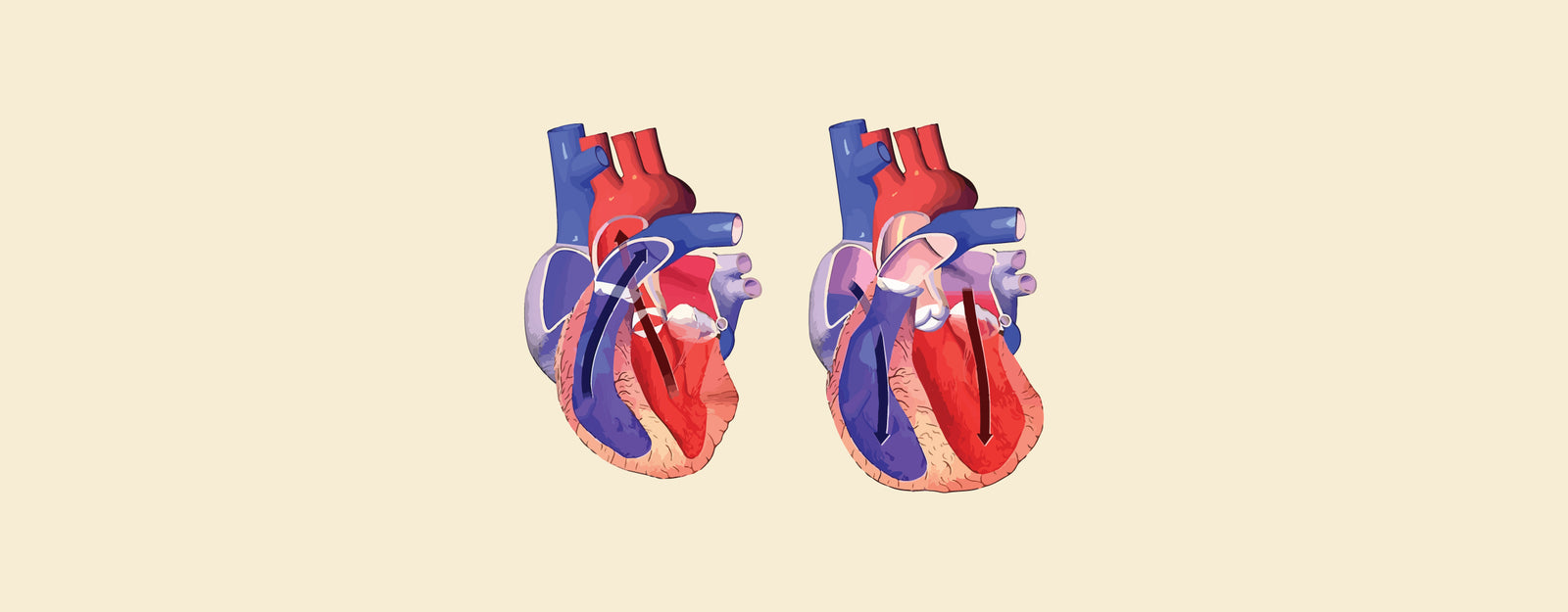Difference between Systolic and Diastolic Heart Failure: Heart failure is a serious medical condition where the heart is unable to pump blood effectively, leading to a variety of symptoms and complications. Heart failure can be either systolic or diastolic. Understanding the difference between these two types of heart failure is crucial for proper diagnosis and treatment.
Difference Between Systolic and Diastolic Heart Failure
|
Feature |
Systolic Heart Failure |
Diastolic Heart Failure |
|
Ejection Fraction (EF) |
Less than or equal to 40% |
Greater than or equal to 50% |
|
Left Ventricular Function |
Reduced pumping ability |
Impaired filling ability due to stiffness |
|
Left Ventricular Size |
May be enlarged |
May be normal or slightly enlarged |
|
Heart Sounds |
May have a systolic murmur |
May have a diastolic murmur |
|
Exercise Capacity |
Reduced exercise tolerance |
Reduced exercise tolerance |
|
Symptoms |
Similar symptoms to diastolic heart failure |
Similar symptoms to systolic heart failure |
Browse Best Scrubs Collection
What is Systolic Heart Failure?
Systolic heart failure is a type of heart failure characterized by the heart's inability to contract effectively during each heartbeat, leading to a decrease in the amount of blood pumped out of the heart with each contraction. The left ventricle, which is responsible for pumping oxygen-rich blood from the heart to the rest of the body, becomes weak and fails to eject blood efficiently.
In systolic heart failure, the ejection fraction (EF), which measures the percentage of blood ejected from the heart with each heartbeat, is typically less than or equal to 40%. A reduced EF indicates that the heart is pumping less blood than it should be, resulting in inadequate blood flow to the body's tissues and organs.
Key Features of Systolic Heart Failure:
- Reduced Ejection Fraction (EF): The primary feature of systolic heart failure is a reduced ejection fraction, indicating the heart's decreased ability to pump blood effectively. A reduced EF is typically less than or equal to 40%.
- Enlarged Left Ventricle: As the heart attempts to compensate for its reduced pumping ability, the left ventricle may become enlarged. An enlarged left ventricle is a common finding in systolic heart failure and is often detected during imaging tests such as echocardiography.
- Symptoms: Common symptoms of systolic heart failure include shortness of breath, fatigue, weakness, swelling in the legs and ankles (edema), and difficulty exercising. These symptoms occur due to inadequate blood flow to the body's tissues and organs.
What is Diastolic Heart Failure
Diastolic heart failure is a condition where the left ventricle of the heart becomes stiff and loses its ability to relax normally during the diastolic phase of the cardiac cycle. As a result, the heart cannot adequately fill with blood during the resting period between heartbeats, leading to decreased stroke volume and cardiac output. Unlike systolic heart failure, the ejection fraction (EF) in diastolic heart failure is preserved, meaning that the heart is still able to pump a normal or near-normal amount of blood out with each heartbeat. In diastolic heart failure, the ejection fraction is typically greater than or equal to 50% EF.
Key Features of Diastolic Heart Failure:
- Preserved Ejection Fraction (EF): Unlike systolic heart failure, diastolic heart failure is characterized by a preserved ejection fraction, indicating that the heart is still able to pump a normal or near-normal amount of blood out with each heartbeat. A preserved EF is typically greater than or equal to 50%.
- Stiff Left Ventricle: The main feature of diastolic heart failure is a stiffening of the left ventricle, which prevents it from relaxing and filling properly during the diastolic phase of the cardiac cycle. This stiffness may be caused by conditions such as hypertension, myocardial hypertrophy, or fibrosis.
- Symptoms: Common symptoms of diastolic heart failure are similar to those of systolic heart failure and may include shortness of breath, fatigue, weakness, swelling in the legs and ankles (edema), and difficulty exercising. These symptoms occur due to inadequate blood flow to the body's tissues and organs.
Shop the Best Lab Coats from Here!
Similarities Between Systolic and Diastolic Heart Failure
While systolic and diastolic heart failure have different underlying causes, they share many similarities in terms of symptoms, diagnosis, and treatment.
- Symptoms: Both types of heart failure may present with similar symptoms, including shortness of breath, fatigue, weakness, swelling in the legs and ankles, and difficulty exercising.
- Diagnosis: Both types of heart failure may be diagnosed using similar tests and procedures, including echocardiograms, electrocardiograms (ECGs), and blood tests.
- Treatment: Treatment for systolic and diastolic heart failure may include similar medications, lifestyle changes, and procedures aimed at improving heart function and relieving symptoms.















